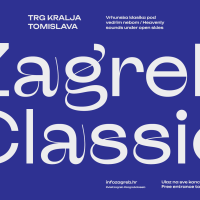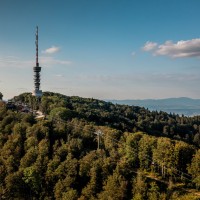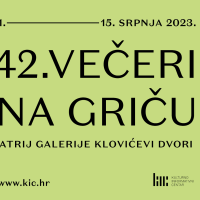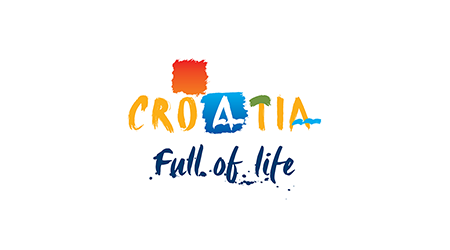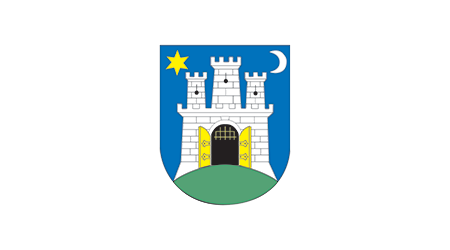Back to newsletter
The Art Pavilion - Greetings from Zagreb!
Until August 21th, the Art Pavilion will feature the exhibition “Greetings from Zagreb”, which will take visitors more than a hundred years into the past and show that many of the favourite gathering spots for the citizens of Zagreb and numerous tourists alike have remained almost unchanged.
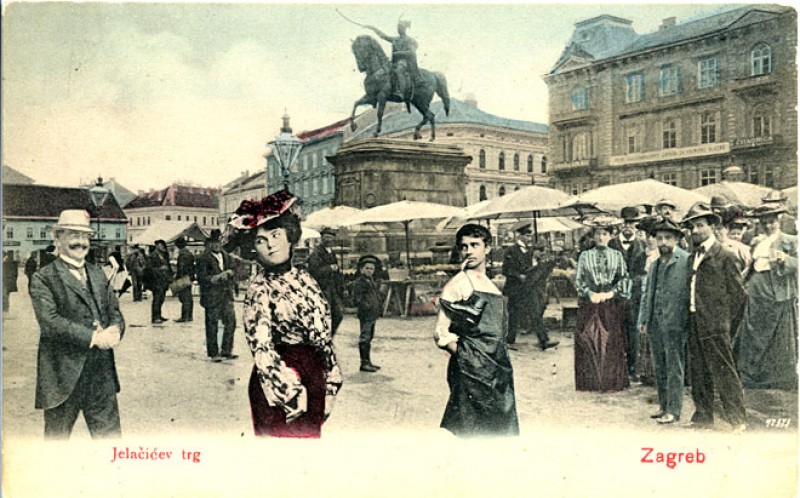 Visit the exhibition “Greetings from Zagreb”, which remains open until August 21th, and take a stroll through the city’s past, learn about the lifestyles of its citizens and the ways they spent their leisure time. The exhibition is a medley of films, photographs and postcards dating between 1891 and 1927. Visitors will certainly recognise Zagreb’s numerous attractions and realise that the modern hangouts where Zagreb’s citizens and tourists like to gather have remained almost unchanged over the last hundred years. At some point in the past postcards became very popular. With their predesigned motifs or custom made photographs, as well as written messages on their backs, they were sent to inform others about where the senders were and with whom, and thus they featured as a usual way of communication and as a way of promoting tourism.
Visit the exhibition “Greetings from Zagreb”, which remains open until August 21th, and take a stroll through the city’s past, learn about the lifestyles of its citizens and the ways they spent their leisure time. The exhibition is a medley of films, photographs and postcards dating between 1891 and 1927. Visitors will certainly recognise Zagreb’s numerous attractions and realise that the modern hangouts where Zagreb’s citizens and tourists like to gather have remained almost unchanged over the last hundred years. At some point in the past postcards became very popular. With their predesigned motifs or custom made photographs, as well as written messages on their backs, they were sent to inform others about where the senders were and with whom, and thus they featured as a usual way of communication and as a way of promoting tourism.
The first photos depicting motifs of Zagreb were taken back in 1840; and as of 1856 the city had a permanent photographer – Danish immigrant Franjo Pommer. The first amateur photo club, associated with the Arts and Crafts Association, was formed in 1892, while the Art Pavilion was the venue for the first International Art Photography Exhibition in 1910. Film came to Zagreb only a year after the Lumière brothers’ 1899 screening in Paris, and like photographs and postcards it offers a great insight into life in the city way back when.
The exhibition portrays Zagreb during the years of the development of the present day downtown area, the so-called Lower Town, between the second half of the 19th and the early 20th centuries. This was a time of major political and social change, also marked by the devastating 1880 earthquake, in the aftermath of which the city developed into what we know today. It was a time of landscaping, construction, opening of institutions, theatres and museums, all of which are nowadays prominent landmarks of the Lower Town and among the most beautiful motifs on city postcards.
Published: 04.08.2016
 Hrvatski
Hrvatski English
English Deutsch
Deutsch Spanish
Spanish French
French Italian
Italian Russian
Russian Korean
Korean Japanese
Japanese Chinese
Chinese Visit the exhibition “Greetings from Zagreb”, which remains open until August 21th, and take a stroll through the city’s past, learn about the lifestyles of its citizens and the ways they spent their leisure time. The exhibition is a medley of films, photographs and postcards dating between 1891 and 1927. Visitors will certainly recognise Zagreb’s numerous attractions and realise that the modern hangouts where Zagreb’s citizens and tourists like to gather have remained almost unchanged over the last hundred years. At some point in the past postcards became very popular. With their predesigned motifs or custom made photographs, as well as written messages on their backs, they were sent to inform others about where the senders were and with whom, and thus they featured as a usual way of communication and as a way of promoting tourism.
Visit the exhibition “Greetings from Zagreb”, which remains open until August 21th, and take a stroll through the city’s past, learn about the lifestyles of its citizens and the ways they spent their leisure time. The exhibition is a medley of films, photographs and postcards dating between 1891 and 1927. Visitors will certainly recognise Zagreb’s numerous attractions and realise that the modern hangouts where Zagreb’s citizens and tourists like to gather have remained almost unchanged over the last hundred years. At some point in the past postcards became very popular. With their predesigned motifs or custom made photographs, as well as written messages on their backs, they were sent to inform others about where the senders were and with whom, and thus they featured as a usual way of communication and as a way of promoting tourism.